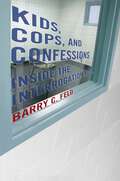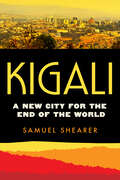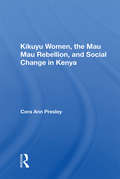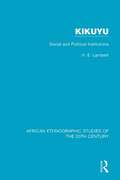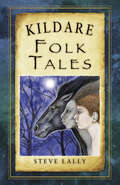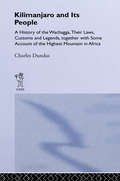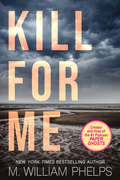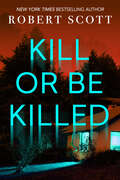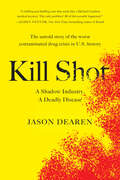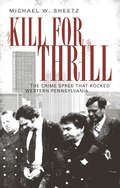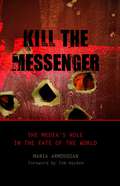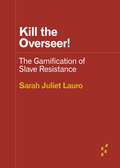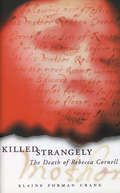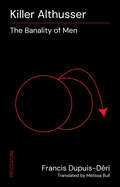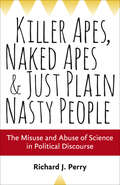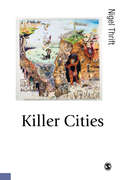- Table View
- List View
Kids, Cops, and Confessions: Inside the Interrogation Room (Youth, Crime, and Justice #3)
by Barry FeldJuveniles possess less maturity, intelligence, andcompetence than adults, heightening their vulnerability in the justice system.For this reason, states try juveniles in separate courts and use differentsentencing standards than for adults. Yet, when police bring kids in forquestioning, they use the same interrogation tactics they use for adults,including trickery, deception, and lying to elicit confessions or to produceincriminating evidence against the defendants.In Kids, Cops, and Confessions, Barry Feld offers thefirst report of what actually happens when police question juveniles. Drawingon remarkable data, Feld analyzes interrogation tapes and transcripts, policereports, juvenile court filings and sentences, and probation and sentencingreports, describing in rich detail what actually happens in the interrogationroom. Contrasting routine interrogation and false confessions enables police,lawyers, and judges to identify interrogations that require enhanced scrutiny,to adopt policies to protect citizens, and to assure reliability and integrityof the justice system. Feld has produced an invaluable look at how the justicesystem really works.
Kigali: A New City for the End of the World (Atelier: Ethnographic Inquiry in the Twenty-First Century)
by Samuel ShearerA free ebook version of this title is available through Luminos, University of California Press's Open Access publishing program. Visit www.luminosoa.org to learn more. In the first decade of the twenty-first century, the government of Rwanda hired American and Singaporean design firms to transform the image of Kigali from a wounded city into a competitive destination for foreign investment. The firms produced promotional images of a post-conflict tabula rasa waiting to be rebuilt by foreign investors as an urban solution to climate change. However, to make this marketing image real, much of the actual city would need to be destroyed and its residents converted to consumers of green housing and service delivery systems. Kigali is an ethnography of a city that is being destroyed so that it can be rebuilt for the end of the world. Drawing on years of ethnographic fieldwork with Kigali residents as they navigate the catastrophes induced by sustainable urbanism, this book offers a searing critique of capitalist solutions to climate change and an account of the city’s popular alternatives to sustainable urbanism.
Kikuyu Women, The Mau Mau Rebellion, And Social Change In Kenya
by Cora Ann PresleyBased on rare oral data from women participants in the "Mau Mau" rebellion, this book chronicles changes in women's domestic reproduction, legal status, and gender roles that took place under colonial rule. The book links labour activism, cultural nationalism, and the more overtly political issues of land alienation, judicial control, and character
Kikuyu: Social and Political Institutions
by H. E. LambertOriginally published in 1956, the main emphasis of the book is on the complex age-set organization which constitutes the framework within which the life of every Kikuyu is regulated from infancy to old age. The book shows how the political and territorial organization, the judicial system and the administration of justice, the training of leaders, the structure and the control of social life are all integrated into the age-set system.
Kildare Folk Tales
by Steve LallyCounty Kildare abounds in folk tales, myths and legends and a selection of the best, drawn from historical sources and newly recorded local reminiscence, have been brought to life here by professional storyteller Steve Lally. Included in this collection are the exploits of the Wizard Earl of Kildare who lived at Maynooth Castle, the legend of the lonely ‘Pooka Horse’ said to dwell amongst the ruins of Rathcoffey Castle, the story of St Bridgid, the patron saint of County Kildare, and the tale of the time the Devil decided to make a house call. Full of wit and wisdom, these tales tell of the strange and macabre; memories of magic and otherworlds; and proud recollections of county heroes such as Dan Donnelly, Ireland’s first Heavy Weight Boxing Champion. The captivating stories, brought to life with unique illustrations from the author, will be enjoyed by readers time and again.
Kilimanjaro and Its People: A History of Wachagga, their Laws, Customs and Legends, Together with Some
by Charles DundasFirst published in 1924, this account was written by a Senior Commissioner of the Tanganyika Territory.
Kilkenny Folk Tales
by Anne FarrellCounty Kilkenny abounds in folk tales, myths and legends and a selection of the best, drawn from historical sources and newly recorded local reminiscence, have been brought to life here by local storyteller Anne Farrell. Kilkenny is the place where, legend has it, St Evin and St Molin once had to have their dispute settled by a shoal of fish; where the infamous Countess of Ormond brought fear and terror to the people of Grannagh; and where an imprudent local man decided to find out if the supposedly bottomless ‘Kerry holes’ would live up to their reputation. It is also said to be the home of a plethora of strange and magical creatures and stories abound of encounters with fairies, ghosts, banshees, shape-shifters and an army of cats who fought an epic battle near Dunmore Caves. From age-old legends and fantastical myths, to amusing anecdotes and cautionary tales, this collection is a heady mix of bloodthirsty, funny, passionate and moving stories. It will take you into a remarkable world where you can let your imagination run wild.
Kill 'Em and Leave: Searching for James Brown and the American Soul
by James McbrideNational Book Award winner James McBride goes in search of the "real" James Brown after receiving a tip that promises to uncover the man behind the myth. His surprising journey illuminates not only our understanding of this immensely troubled, misunderstood, and complicated soul genius but the ways in which our cultural heritage has been shaped by Brown's legacy. Kill 'Em and Leave is more than a book about James Brown. Brown's rough-and-tumble life, through McBride's lens, is an unsettling metaphor for American life: the tension between North and South, black and white, rich and poor. McBride's travels take him to forgotten corners of Brown's never-before-revealed history: the country town where Brown's family and thousands of others were displaced by America's largest nuclear power bomb-making facility; a South Carolina field where a long-forgotten cousin recounts, in the dead of night, a fuller history of Brown's sharecropping childhood, which until now has been a mystery. McBride seeks out the American expatriate in England who co-created the James Brown sound, visits the trusted right-hand manager who worked with Brown for forty-one years, and interviews Brown's most influential nonmusical creation, his "adopted son," the Reverend Al Sharpton. He describes the stirring visit of Michael Jackson to the Augusta, Georgia, funeral home where the King of Pop sat up all night with the body of his musical godfather, spends hours talking with Brown's first wife, and lays bare the Dickensian legal contest over James Brown's estate, a fight that has consumed careers; prevented any money from reaching the poor schoolchildren in Georgia and South Carolina, as instructed in his will; cost Brown's estate millions in legal fees; and left James Brown's body to lie for more than eight years in a gilded coffin in his daughter's yard in South Carolina. James McBride is one of the most distinctive and electric literary voices in America today, and part of the pleasure of his narrative is being in his presence, coming to understand Brown through McBride's own insights as a black musician with Southern roots. Kill 'Em and Leave is a song unearthing and celebrating James Brown's great legacy: the cultural landscape of America today. Praise for Kill 'Em and Leave"Thoughtful and probing . . . with great warmth, insight and frequent wit. The results are partisan and enthusiastic, and they helped this listener think about the work in a new way. . . . James McBride's welcome elucidation . . . is clear, deeply felt and unmistakable."--Rick Moody, The New York Times Book Review "[McBride] turns out to also be the biographer of James Brown we've all been waiting for. . . . McBride's true subject is race and poverty in a country that doesn't want to hear about it, unless compelled by a voice that demands to be heard."--Boris Kachka, New York "The definitive look at one of the greatest, most important entertainers, The Godfather, Da Number One Soul Brother, Mr. Please, Please Himself--JAMES BROWN."--Spike Lee "James McBride on James Brown is the matchup we've been waiting for, a musician who came up hard in Brooklyn with JB hooks lodged in his brain, a monster ear for the truth, and the chops to write it."--Gerri Hirshey, author of Nowhere to Run: The Story of Soul Music "An unconventional and fascinating portrait of Soul Brother No. 1 and the significance of his rise and fall in American culture."--Kirkus ReviewsFrom the Hardcover edition.
Kill All Normies: Online Culture Wars From 4Chan And Tumblr To Trump And The Alt-Right
by Angela NagleRecent years have seen a revival of the heated culture wars of the 1990s, but this time its battle ground is the internet. On one side the alt right ranges from the once obscure neo-reactionary and white separatist movements, to geeky subcultures like 4chan, to more mainstream manifestations such as the Trump-supporting gay libertarian Milo Yiannopolous. On the other side, a culture of struggle sessions and virtue signalling lurks behind a therapeutic language of trigger warnings and safe spaces. The feminist side of the online culture wars has its equally geeky subcultures right through to its mainstream expression. Kill All Normies explores some of the cultural genealogies and past parallels of these styles and subcultures, drawing from transgressive styles of 60s libertinism and conservative movements, to make the case for a rejection of the perpetual cultural turn.
Kill For Me
by M. William PhelpsA newlywed couple has a murderous celebration the day after their wedding in this classic true-crime thriller by the New York Times–bestselling journalist.On a hot Florida night in 2003, aspiring model Sandee Rozzo drove into her garage after a long shift at a local bar. Waiting in the shadows was a killer who fired eight bullets point-blank into her chest. The police immediately suspected Timothy Alvin &“Tracey&” Humphrey, the ex she had recently agreed to testify against for imprisoning and raping her.But Humphrey had recently manipulated nineteen-year-old Ashley Laney into falling in love with him. On their wedding night, he made a strange request—one that would end in a tragic and brutal murder. The police knew Humphrey was the likely suspect, but he had an alibi for the time of the shooting. How could they prove that he was the psychopath behind Sandee&’s murder even if he didn&’t pull the trigger? It would all come down to a bold prison escape, a manhunt for a killer, and an explosive trial . . .INCLUDES SIXTEEN PAGES OF SHOCKING PHOTOS&“Phelps is the Harlan Coben of real-life thrillers.&”—Allison Brennan
Kill Or Be Killed
by Robert ScottIn May 1998, in the small northern California town of Cottonwood, Norman Daniels, 28, opened a wax-sealed envelope given to him by friend Todd Garton, 27, who claimed to be a paid assassin for an elite organization called the Company. Now the Company was recruiting Daniels. His initiation would be to kill the person named inside the envelope: Carole Garton, 28 - Todd Garton's pregnant wife. On May 16, 1998, Daniels shot Carole Garton five times, killing her and her unborn child. But police launched an intense investigation that revealed the sordid story behind the murder. In a dramatic trial, the depths of Garton's depravity and Daniels's desperation would be revealed-and justice would finally be served.
Kill Shot: A Shadow Industry, a Deadly Disease
by Jason DearenAn award-winning investigative journalist's horrifying true crime story of America's deadliest drug contamination outbreak and the greed and deception that fueled it. Two pharmacists sit in a Boston courtroom accused of murder. The weapon: the fungus Exserohilum rostratum. The death count: 100 and rising. Kill Shot is the story of their hubris and fraud, discovered by a team of medical detectives who raced against the clock to hunt the killers and the fungal meningitis they'd unleashed."Bloodthirsty" is how doctors described the fungal microbe that contaminated thousands of drug vials produced by the New England Compounding Center (NECC). Though NECC chief Barry Cadden called his company the "Ferrari of Compounders," it was a slapdash operation of unqualified staff, mold-ridden lab surfaces, and hastily made medications that were injected into approximately 14,000 people. Once inside some of its human hosts, the fungus traveled through the tough tissue around the spine and wormed upward to the "deep brain," our control center for balance, breath, and the vital motor functions of life.Now, investigative journalist Jason Dearen turns a spotlight on this tragedy--the victims, the heroes, and the perpetrators--and the legal loopholes that allowed it to occur. Kill Shot forces a powerful but unchecked industry out of the shadows.
Kill for the Thrill: The Crime Spree That Rocked Western Pennsylvania (True Crime)
by Michael W Sheetz&“The book recounts a brutal string of murders committed by John Lesko and Michael Travaglia, who face the death penalty.&” —TribLIVE During the winter of 1979, southwestern Pennsylvania was rocked by a series of sensational murders, sparking a thirty-year criminal justice saga. A week of brutal, seemingly random killings culminated in the provocation and fatal shooting of Patrolman Leonard Miller, an officer new to the town of Apollo&’s police force and only twenty-one years old. Little more than a year later, two men were convicted of the rash of homicides and sentenced to death—yet both are alive today. Incorporating details of the central characters&’ personal lives as well as the state&’s court system, criminologist Michael W. Sheetz here relays the awful story of the so-called &“kill for thrill&” crime spree with the drama of a novelist and the insight of an officer of the law.
Kill the Cowboy: A Battle of Mythology in the New West
by Sharman Apt RussellOn ranching, environmentalism, and change -- life and thought in the West, seen through the eyes of some of the players.
Kill the Messenger: The Media's Role in the Fate of the World
by Maria ArmoudianThis wide-ranging, insightful book will make readers keenly aware of the media's power, while underscoring the role that we all play in fostering a media climate that cultivates a greater sense of humanity, cooperation, and fulfillment of human potential. What role do the media have in creating the conditions for atrocities such as occurred in Rwanda? Conversely, can the media be used to preserve democracy and safeguard the human rights of all citizens in a diverse society? How will the media, now global in scope, affect the fate of the planet itself? The author explores these intriguing questions and more in this in-depth examination of the media's power to either help or harm. She begins by documenting how the media were used to spread a contagion of hate in three deadly conflicts: Rwanda, Nazi Germany, and the former Yugoslavia. She then turns to areas of the world where the media acted constructively-by aiding the peace process in Northern Ireland, rebuilding democracy in Chile, bridging ethnic divides in South Africa, improving the lot of women in Senegal, and boosting transparency and democratization in Mexico and Taiwan. Finally, she explains how the media interact with psychological and cultural forces to impact perceptions, fears, peer-pressure, "groupthink," and the creation of heroes and villains.
Kill the Ones You Love
by Robert ScottExperience the true crime story of a married father and ex-cop with a dark side in this &“fast-paced, unforgettable real-life thriller&” (Sue Russell).Family On The RunA handsome, married young father and former deputy sheriff, Gabriel Morris looked like the picture of respectability. When his mother and her boyfriend were found brutally murdered in their pleasant Oregon seaside home, authorities were shocked to find a trail leading to him. Soon, police in several states were caught up in a riveting chase as Gabriel, with family in tow, went on a cross-country crime spree. No one knew if his wife, Jessica, was a victim or accomplice; or if his four-year-old daughter was in jeopardy. In a gracious Virginia suburb, a SWAT team swooped down on the renegade family and ended their wild, dangerous ride. What followed was even more shocking, as the story of how Gabriel Morris ended up on the wrong side of the law took investigators on a dark journey into the heart of a killer . . .Includes sixteen pages of dramatic photos.&“Unsettling. . . . While Scott paints a horrifying murder scene, he also efficiently shows how such monsters are made. . . . Unexpected shocks and disturbing surprises.&” —Publishers Weekly
Kill the Overseer!: The Gamification of Slave Resistance (Forerunners: Ideas First)
by Sarah Juliet LauroExplores the representation of slave revolt in video games—and the trouble with making history playable <P><P>Kill the Overseer! profiles and problematizes digital games that depict Atlantic slavery and “gamify” slave resistance. In videogames emphasizing plantation labor, the player may choose to commit small acts of resistance like tool-breaking or working slowly. Others dramatically stage the slave’s choice to flee enslavement and journey northward, and some depict outright violent revolt against the master and his apparatus. In this work, Sarah Juliet Lauro questions whether the reduction of a historical enslaved person to a digital commodity in games such as Mission US, Assassin’s Creed, and Freedom Cry ought to trouble us as a further commodification of slavery’s victims, or whether these interactive experiences offer an empowering commemoration of the history of slave resistance. Forerunners is a thought-in-process series of breakthrough digital works. <P><P>Written between fresh ideas and finished books, Forerunners draws on scholarly work initiated in notable blogs, social media, conference plenaries, journal articles, and the synergy of academic exchange. This is gray literature publishing: where intense thinking, change, and speculation take place in scholarship.
Killdozer: The True Story Of The Colorado Bulldozer Rampage
by Patrick BrowerOn June 4, 2004, Marvin Heeymeyer unleashed his gigantic, armored, tank-like bulldozer upon the small town of Granby, Colorado. It was an act of defiant, but misguided, revenge upon those who he perceived had done him wrong in a long series of local property disputes. Over a period of serveral hours, Heemeyer proceeded to cause mayhem and destruction while overwhelming the efforts of local police to stop the Killdozer in its tracks. This book recounts the events and actions of the perpetrator leading up to the dramatic rampage as well as the aftermath of the horrendous incident in the community.
Killed Strangely: The Death of Rebecca Cornell
by Elaine Forman Crane"It was Rebecca's son, Thomas, who first realized the victim's identity. His eyes were drawn to the victim's head, and aided by the flickering light of a candle, he 'clapt his hands and cryed out, Oh Lord, it is my mother.' James Moills, a servant of Cornell . . . described Rebecca 'lying on the floore, with fire about Her, from her Lower parts neare to the Armepits.' He recognized her only 'by her shoes.'"--from Killed Strangely On a winter's evening in 1673, tragedy descended on the respectable Rhode Island household of Thomas Cornell. His 73-year-old mother, Rebecca, was found close to her bedroom's large fireplace, dead and badly burned. The legal owner of the Cornells' hundred acres along Narragansett Bay, Rebecca shared her home with Thomas and his family, a servant, and a lodger. A coroner's panel initially declared her death "an Unhappie Accident," but before summer arrived, a dark web of events--rumors of domestic abuse, allusions to witchcraft, even the testimony of Rebecca's ghost through her brother--resulted in Thomas's trial for matricide. Such were the ambiguities of the case that others would be tried for the murder as well. Rebecca is a direct ancestor of Cornell University's founder, Ezra Cornell. Elaine Forman Crane tells the compelling story of Rebecca's death and its aftermath, vividly depicting the world in which she lived. That world included a legal system where jurors were expected to be familiar with the defendant and case before the trial even began. Rebecca's strange death was an event of cataclysmic proportions, affecting not only her own community, but neighboring towns as well. The documents from Thomas's trial provide a rare glimpse into seventeenth-century life. Crane writes, "Instead of the harmony and respect that sermon literature, laws, and a hierarchical/patriarchal society attempted to impose, evidence illustrates filial insolence, generational conflict, disrespect toward the elderly, power plays between mother-in-law and daughter-in-law, [and] adult dependence on (and resentment of) aging parents who clung to purse strings." Yet even at a distance of more than three hundred years, Rebecca Cornell's story is poignantly familiar. Her complaints of domestic abuse, Crane says, went largely unheeded by friends and neighbors until, at last, their complacency was shattered by her terrible death.
Killer Althusser: The Banality of Men
by Francis Dupuis-DériOn November 16, 1980, the Marxist philosopher Louis Althusser strangled his wife in their Parisian apartment, in a period when she was thinking of leaving him. What do we know about Hélène Legotien today? Almost nothing, except that she was murdered by her illustrious spouse. In a sense, Althusser killed her twice, first, by his own hands and second, by dominating the public space to talk about himself. What then is the political significance of this femicide and the discourse about it which has taken shape in the public space? Delving into the writings of the murderer and his allies in the French intelligentsia, Killer Althusser reasserts the patriarchal violence of the murder, masculine solidarity, and the complacency of a cultural elite.
Killer Apes, Naked Apes, and Just Plain Nasty People: The Misuse and Abuse of Science in Political Discourse
by Richard J. PerryMisunderstood—or deliberately twisted—biological science leads to overheated rhetoric and bad policy.We like to think that science always illuminates. But the disturbing persistence of the concept of biological determinism—the false idea that human behavior is genetically fixed or inherently programmed and therefore is not susceptible to rapid change—shows that scientific research and concepts can be distorted to advance an inhumane and sometimes deadly political agenda. It was biological determinism that formed the basis of the theory of eugenics, which in turn led to the forced sterilization of "misfits" and the creation of Nazi death camps.In Killer Apes, Naked Apes, and Just Plain Nasty People, anthropologist Richard J. Perry delivers a scathing critique of determinism. Exploring the historical context and enduring popularity of the movement over the past century and a half, he debunks the facile and the reductionist thinking of so many popularizers of biological determinism while considering why biological explanations have resonated in ways that serve to justify deeply conservative points of view.Moving through time, from the prevalence of overt racism in the late nineteenth and early twentieth centuries to "human nature" arguments, from the rise of sociobiology in the 1970s to the current fixation on evolutionary psychology, the book argues that both history and cross-cultural studies amply demonstrate the human capacity for growth and self-determination. Clearly written, conversational, and rationally argued, this book promotes sound and careful research while skewering the bogus ideological assertions that have been used to justify colonialism, slavery, gender discrimination, neoliberal economic policies, and the general status quo.
Killer Apps: War, Media, Machine
by Jeremy Packer Joshua ReevesIn Killer Apps Jeremy Packer and Joshua Reeves provide a detailed account of the rise of automation in warfare, showing how media systems are central to building weapons systems with artificial intelligence in order to more efficiently select and eliminate military targets. Drawing on the insights of a wide range of political and media theorists, Packer and Reeves develop a new theory for understanding how the intersection of media and military strategy drives today's AI arms race. They address the use of media to search for enemies in their analyses of the history of automated radar systems, the search for extraterrestrial life, and the development of military climate science, which treats the changing earth as an enemy. As the authors demonstrate, contemporary military strategy demands perfect communication in an evolving battlespace that is increasingly inhospitable to human frailties, necessitating humans' replacement by advanced robotics, machine intelligence, and media systems.
Killer Charm: And Other True Cases (From the Files of Linda Fairstein #7)
by Linda FairsteinThe complete collection of true crime stories and articles by the New York Times–bestselling author and former prosecutor. In this collection of horrifyingly true stories, Linda Fairstein provides an in-depth look inside the minds of such psychopaths as Ted Bundy and the Craigslist Killer. Drawing on decades of experience as a sex crimes prosecutor in New York City, she delves into the atrocities of these cold-blooded criminals and explains how they target their unsuspecting victims. A true victim advocate, she deftly touches on taboo subjects like law enforcement&’s astounding failure to process rape kits, as well as the false rape claims that ruin innocent people&’s lives. With her background in the Special Victims Bureau, Fairstein offers an unfiltered view of rape in the United States. But she doesn&’t stop there: She uses her understanding of the inner workings of violent criminals&’ minds to outline ways for women to protect themselves. Originally published in Cosmopolitan magazine and collected here for the first time, each essay features a new introduction by the author.
Killer Charm: The Double Lives of Psychopaths (From the Files of Linda Fairstein #1)
by Linda FairsteinLinda Fairstein unmasks the true face of psychopathy, and reveals the warning signs that every woman should knowThe 2009 &“Craigslist Killer&” murder case shocked America, not just because of the heinous nature of the crimes but because their perpetrator—a handsome young law student with an unsuspecting girlfriend—seemed a very unlikely suspect. This killer, like others before him, had learned to leverage his charm and golden-boy looks to lure his victims, a skill many psychopaths learn to master. In Killer Charm, legal expert Linda Fairstein draws on her decades of experience in the Manhattan District Attorney&’s office to uncover what traits psychopaths often share, and how to spot them. She illustrates these points with the stories of some of America&’s most notorious sex criminals, such as Ted Bundy and Marvin Teicher. Originally published in Cosmopolitan, this essay is now available in digital format for the first time and features a new introduction by the author.
Killer Cities (Published in association with Theory, Culture & Society)
by Nigel ThriftKiller Cities uses a combination of social theory, polemic and close attention to empirical detail to tell the story of how and why cities cause mass animal death and, in the process, hasten the destruction of the planet. This book is not just a lament, however. It is an attempt to navigate out of this mess of planned and unplanned violence towards a world in which cities no longer act as killers but become aligned with the lives of other beings. It offers pragmatic ways of diminishing the death toll and changing mindsets without ever minimizing the dilemmas that inevitably will have to be faced. Killer cities can be rehabilitated so that they offer brighter paths towards the future - for animals, for human beings, and for the planet. A new urban geography could be within our grasp. Indeed, it has to be, for all of our sakes.
